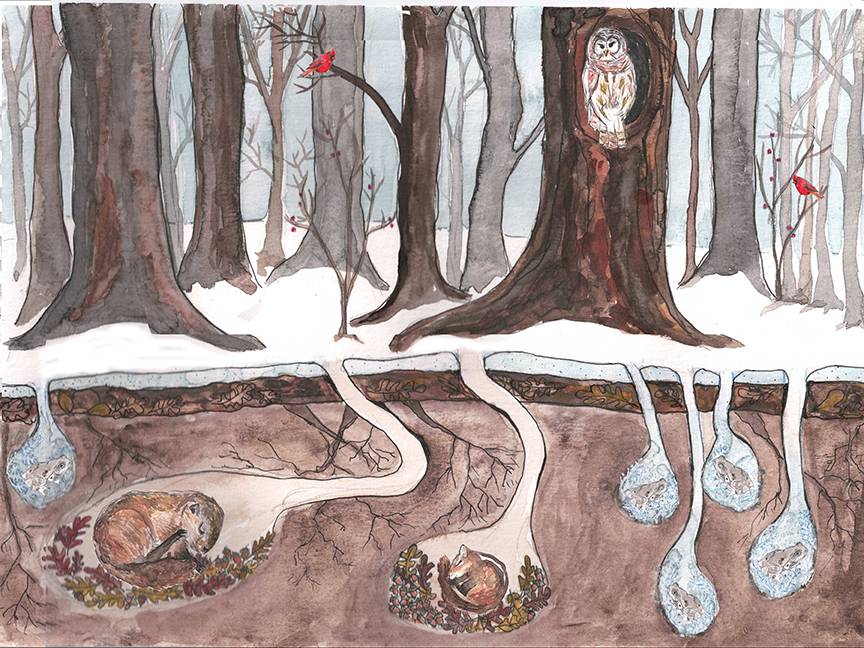
Every winter we have a “Hibernation Celebration” both at school and at home. What is a Hibernation Celebration pray tell? It’s a super fun way celebrate the winter holidays in a non-denominational nature focused way. It can be a full lesson block with academic content the way we do at school or it can just be a fun party. We usually celebrate at the end of December right before winter break (otherwise known as the perfect time to hibernate…) but this is a great topic for January or February– or any snowy cold month really.
If you want to skip to party ideas click here.
For all of my Hibernation content click here.
When we celebrate hibernation at school it isn’t just a straightforward scientific discussion of bears in caves. (Fun fact, bears aren’t true hibernators- they enter torpor!) Each grade level does this each winter for six years so the complexity increases each year. Our youngest friends start of with the science of hibernation (and torpor, brumation, diapause etc) and it is often revisited with older students in increasing complexity. For instance, did you know that NASA/ ESA has studied induced human hibernation for spaceflight? Or that in Ancient Rome “winter quarters” were called a hibernaculum, the root of the word that is now used to describe a winter animal dwelling? There are a ton of fun hands on experiments to demonstrate some of the wackier animal tactics for hibernation (frog ant-freeze anyone?) and of course copious burrow and fort building. Older kids can experiment with insulating their forts and see what natural materials conserve the most heat. We also veer off into so many tangents… check out the mind map below for just a taste of the possible directions one can take a hibernation exploration!
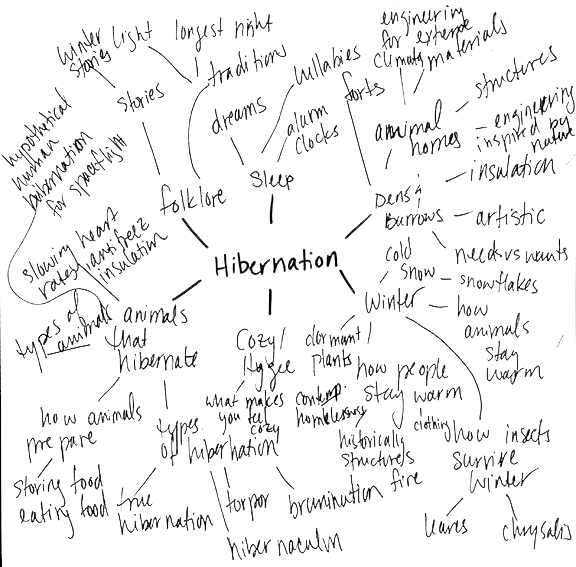
Dreams and sleep are a fun topic to explore (although scientists tell us hibernating animals don’t actually dream.) that can take a number of artistic directions. When the World is Dreaming by Rita Gray on the book list below is a book of haikus about animals dreaming. Check it out and then try and write your own! Younger friends might want to draw a favorite animal’s dream. Dormouse Dreams is all about what a dormouse imagines his friends are doing while he hibernates. Warm vanilla milk, bedtime snacks and other human comforts could make a fun snack!


Another fun project is to review wants and needs- both in animals and humans. Look at some of the many amazing artists that draw animals hibernating in fanciful burrows with various creature comforts and make a list of what would be important to you in a hibernculum. Then draw your burrow and let your imagination run wild! Mr. Postmouse’s Rounds by Marianne Dubuc is a great starting point (although not specific to hibernation)


Older students, or really anyone studying just about any period of history can dive into different ways that humans have historically survived winter. Shelters, fire, candles, insulation- so many different ways to follow students interest!
Hibernation Vocabulary:
- hibernation: the condition or period of an animal or plant spending the winter in a dormant state.
- torpor: torpor involves physiological changes related especially to body temperature, metabolism, and water balance. (As opposed to hibernation is when an organism spends the winter in a state of dormancy)
- brumation: a state or condition of sluggishness, inactivity, or torpor exhibited by reptiles (such as snakes or lizards) during winter or extended periods of low temperature.
- diapause: insects that are inactive during the winter months undergo a state in which their growth, development, and activities are suspended temporarily, with a metabolic rate that is high enough to keep them alive. This dormant condition is termed diapause.
- hibernaculum: a shelter occupied during the winter by a dormant animal (such as an insect, snake, bat, or marmot)
Interesting Hibernation Facts:
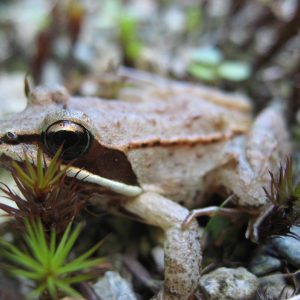
Wood frogs embrace the cold by settling into leaf litter and freezing solid for months at a time. When it warms up, these frogsicles simply thaw out and hop away. Their secret is a natural antifreeze that prevents fatal ice crystals from forming inside the frogs’ cells when their hearts and breathing cease.
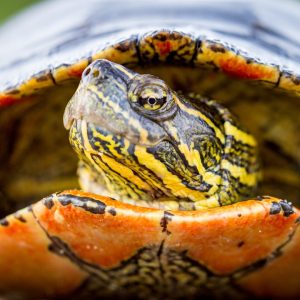
Hibernating turtles get the limited oxygen they need through their butts in a process called cloacal respiration. The blood vessels around the cloaca—an all-purpose orifice found in many reptiles—are able to take up oxygen directly from the water.
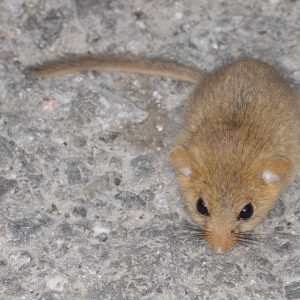
Dormice eat so much before hibernation that they can grow to be double their normal size. They are the longest hibernators and can sleep for almost 11 months!

Bears do not urinate while hibernating. (Technically torpor) Instead, they recycle urine into proteins. This helps in avoiding muscle atrophy. When a black bear prepares for hibernation, it can gain up to 30 lb (13.6 kg) a week. Hibernating bears can be very aggressive and grumpy if disturbed during their hibernation period.
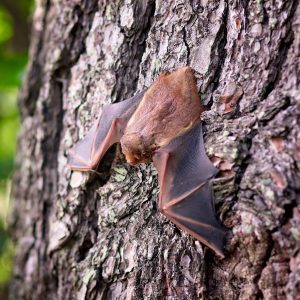
Bats are among the longest hibernators. They only wake up to drink, their heart rate reduces from 1,000 beats per minute to 25, and some only breathe once every two hours.
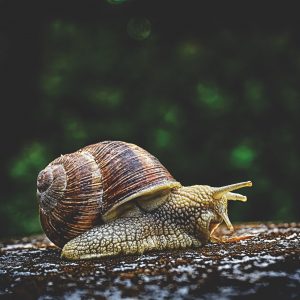
Snails hibernate in their shells. During this phase, they spend nearly no energy and do not need to eat anything. Snails can hibernate for years in locations where there is little rain.
Books to get you started:
There are a million great books– these are some of our favorites!
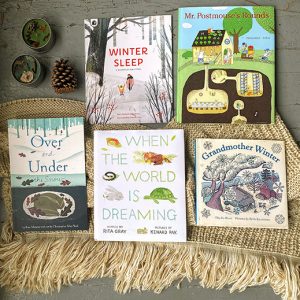
- Over and Under the Snow by Kate Messner
- Winter Sleep: A Hibernation Story by Sean Taylor
- Grandmother Winter by Phyllis Root
- Dormouse Dreams by Karma Wilson
- When the World is Dreaming by Rita Gray
- Mr. Postmouse’s Rounds by Marianne Dubuc
- Snuggle Down Deep by Diane Ohanesian
- Hiders Seekers Finders Keepers: How Animals Adapt to Winter by Jessica Kulekjian
Blog cover image is a painting by J.Lehson

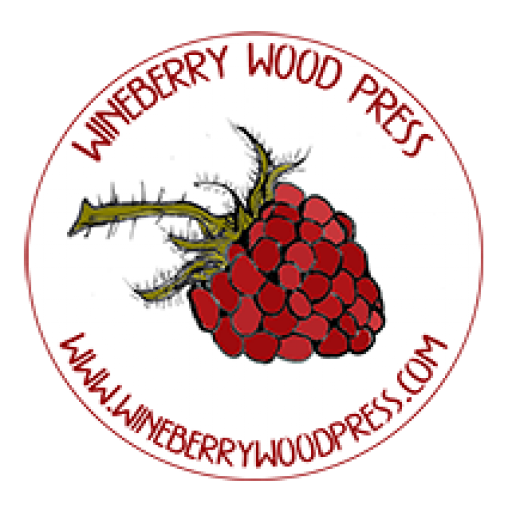
[…] Cut the legs off your pants and gather the rest of the supplies. choose a stuffie that will fit in your sleeping bag and look at the different types of chrysalises for inspiration. Consider reading Not a Buzz to Be Found or another book about winter insects and diapause. […]
[…] break (which is what we usually do) or a fun way to celebrate winter in January. Check out the Hibernation Celebration page for some more ways to learn about hibernation or just dive right into the snacks! Below there […]